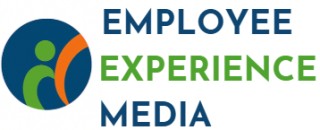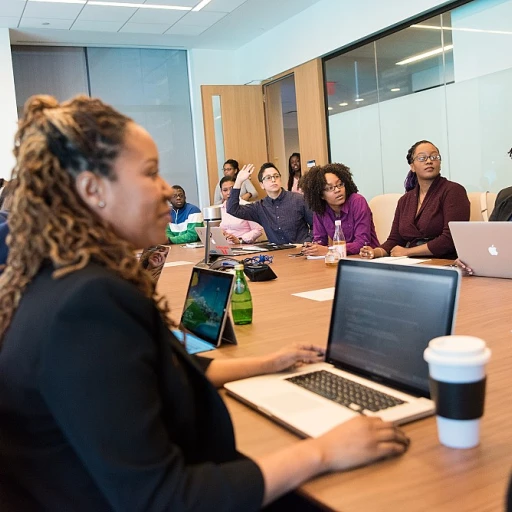The Importance of Employee Orientation
The Role of Employee Onboarding in Successful Orientation
Employee orientation is a crucial first step in ensuring new hires are well-acquainted with their role and the company. By establishing a structured onboarding process, organizations can set the stage for employee success and satisfaction. The process begins well before an employee's first day and should seamlessly integrate organizational culture, job expectations, and available resources for professional development.
The goal of a comprehensive orientation program is to provide new employees with the necessary tools and support for a smooth transition into their new role. This includes introducing them to the team, laying out clear job objectives, and showcasing the benefits of effective employee orientation. Implementing a consistent and thorough onboarding experience, supported by training programs and training software, is key to fostering engagement and boosting productivity.
Part of a successful orientation involves not only imparting essential information about the company and its procedures but also making new hires feel welcomed and valued. These initial experiences can significantly impact their adjustment and long-term satisfaction within the organization. Thus, understanding the variety of approaches—like traditional, interactive, and digital orientations—can help companies select the best fit for their organizational needs.
Ultimately, crafting a memorable onboarding experience is fundamental. It lays the groundwork for consistent achievement of company goals and boosts employee morale and retention. For more insights on enhancing the onboarding process and creating a lasting impression on new hires, explore how to create a memorable employee onboarding experience.
Traditional Orientation: The Basics
The Foundation of Employee Success: Understand Traditional Orientation
When it comes to employee onboarding, traditional orientation programs have long been the cornerstone. They offer a structured introduction to an organization's culture and operational framework. As hires embark on their new roles, understanding the foundations through an orientation process is crucial.
Traditional orientation focuses on essentials:
- Introduction to Company Policies: New employees are introduced to workplace guidelines, company policies, and procedures, providing a solid framework for their responsibilities.
- Role Clarification: This includes in-depth descriptions of the employee's role and how it contributes to organizational goals. Clear goals and job expectations are communicated to ensure alignment.
- Team and Leadership Interaction: Employees meet their teams and leaders, fostering relationships and understanding group dynamics. This interaction is crucial for collaboration and team success.
- Training Programs: Participants engage in essential employee training programs that cover their specific job requirements. These programs are vital in equipping them with skills to meet the challenges of their positions.
- Support Systems Overview: Employees are briefed on available support systems and resources, ensuring they have what they need to succeed in their role.
Traditional orientation plays a vital role in creating a familiar environment, reassuring employees of support as they transition into their new roles. It's a vital step to set the groundwork for personal and professional development.
For organizations exploring the best practices for enhancing employee experience during remote onboarding, it’s pivotal to contrast traditional methods with new digital strategies.
Enhancing employee experience during remote onboarding shows how these methods can complement each other.
The stability provided by traditional orientation programs can catalyze employee engagement and retention. When properly executed, it lays a healthy foundation for leadership development and further training programs, preparing new hires for meaningful growth within the company.
Interactive Orientation: Engaging New Hires
Creating a Dynamic and Inviting Environment
An interactive orientation is more than just a presentation of company policies and procedures. It's about creating a dynamic and engaging atmosphere that facilitates active participation and learning. The concept revolves around making new hires feel welcomed, supported, and integrated from day one. This ensures they become productive members of the team faster and more efficiently.
Interactive approaches to employee onboarding often include various methods and tools that promote engagement:
- Engaging icebreakers to alleviate first-day jitters and encourage newcomers to mingle with the existing team.
- Role-playing simulations that prepare employees for real-life situations they might face in their job.
- Group discussions that encourage knowledge sharing and support team bonding.
By fostering a sense of community and encouraging participative learning, organizations enable recruits to connect with the company's mission and culture early on in the orientation process. The adoption of interactive orientation leads to numerous benefits for employees and employers alike, including higher retention rates and enhanced productivity.
Utilizing Modern Tools for Employee Development
Incorporating technology and training software into the orientation program can further enhance the learning experience for new hires. Features such as online learning modules, virtual reality simulations, or even interactive quizzes can help employees retain important information more effectively.
Tools focusing on gamification can transform the training program into an enjoyable experience, motivating employees to actively participate in their onboarding process. This approach also offers the flexibility needed to accommodate different learning paces and styles, allowing every new hire to grasp their role and company goals better.
Moreover, implementing interactive methods can facilitate better communication among hires and the leadership development team, aligning everyone toward shared objectives and cultivating a strong organizational culture.
As companies continue to adapt to the changing landscape of employee training and onboarding, adopting an interactive orientation is an excellent way to embrace forward movement and recovery. To explore more on enhancing employee experience through these strategies, visit
our comprehensive analysis.
Digital Orientation: Embracing Technology
Digital Tools for Onboarding Efficiency
The landscape of employee orientation has transformed significantly with the advent of technology, paving the way for digital orientation as an innovative method to onboard new hires. Embracing technology in the onboarding process allows companies to create a seamless, engaging, and efficient orientation experience. Digital tools and software offer several advantages that enhance both the onboarding and orientation process.
First, utilizing digital platforms can streamline the logistical aspects of onboarding, such as handling paperwork, scheduling training sessions, and tracking the progress of new employees. This not only reduces administrative burdens but also ensures a more organized orientation process.
Incorporating technology in orientation also supports interactive learning experiences through the use of online training programs and orientation program modules. These digital features encourage self-paced learning, allowing employees to better absorb information at their convenience. This flexibility is crucial for accommodating diverse learning styles and paves the way for effective employee training.
Moreover, digital orientation programs can facilitate instant access to company resources, role-specific tools, and industry best practices. Employees can access these materials even prior to their official start date, which fosters early acclimation into the company culture and prepares them for their new roles.
Additionally, technology-enabled onboarding often includes communication platforms that help new hires connect with the team and receive support from their managers. This aspect is vital for team building and enhances the overall employee experience by fostering a sense of belonging and engagement.
The benefits of implementing a digital orientation are manifold, ranging from improved efficiency and personalized learning experiences to stronger team integration. Organizations keen on keeping pace with modern onboarding best practices must consider how integrating digital tools can elevate their orientation program. The ultimate goal is to equip new hires with the knowledge and support they need to hit the ground running, effectively contributing to the organization's goals from day one.
Choosing the Right Orientation Type
Deciding on the Suitable Orientation Approach
When it comes to selecting the most fitting orientation process for your team, the decision can greatly impact the overall onboarding and training experience for employees. Each organization should consider several factors to determine the best orientation type.
To begin with, evaluate the organization's culture and the specific goals of your employee orientation program. Understanding the company values and how new hires can embody them will shape the foundation of the orientation process. Additionally, knowing the available resources, such as orientation software or online learning platforms, can streamline the onboarding process, making it more efficient and engaging.
Consider the nature of the job roles and the level of team interaction required. For roles demanding close collaboration, an interactive orientation approach might create a more personalized and supportive onboarding journey. Meanwhile, for companies with a dispersed team, digital onboarding or orientation programs can offer connectivity and accessibility across various locations.
Weighing the benefits employee can gain from different types of orientation is also crucial. A traditional approach might be more suitable for organizations emphasizing structured and detailed employee training. On the other hand, for those with a focus on technological advancement, embracing digital orientation solutions can enhance learning and development.
Ultimately, blending multiple orientation types might be necessary to suit diverse employees' needs and adapt to changing industry standards. By assessing these elements, employers can provide a comprehensive onboarding employee experience that aligns with the company's objectives and supports the growth and development of new hires.
Measuring Orientation Success
Evaluating the Success of Orientation Programs
Determining the effectiveness of your employee orientation program is crucial to ensure that new hires transition smoothly and become productive team members. This assessment aids in identifying strengths and areas for improvement in the onboarding process.
Firstly, gathering feedback from new employees about their onboarding experience is vital. Their insights can reveal whether the orientation program met their expectations and equipped them adequately for their role. Consider using surveys or conducting one-on-one interviews to gain qualitative and quantitative data.
In addition to feedback, evaluate the training programs by tracking key performance indicators such as employee retention rates, job satisfaction scores, and time-to-productivity metrics. These will help gauge the immediate and long-term benefits of the orientation process.
Collaboration with team leaders who work closely with new employees is essential. They can offer valuable perspectives on the new hires' integration and development within the organization. This will assist in assessing if the training and onboarding strategies align with the team's goals and company objectives.
Implementing modern training software can significantly enhance these evaluations. Digital tools allow for tracking learning progress and provide analytics on employee engagement throughout the training programs. Utilizing these insights will refine the orientation framework, ensuring it remains relevant and effective in preparing employees for success within the company.
Remember, the employee orientation process is not one-size-fits-all. Tailor your program to fit the unique needs of your organization, leveraging interactive, traditional, or digital approaches as necessary. Regularly update and adjust the strategy to ensure continuous improvement and support your organization's growth.














